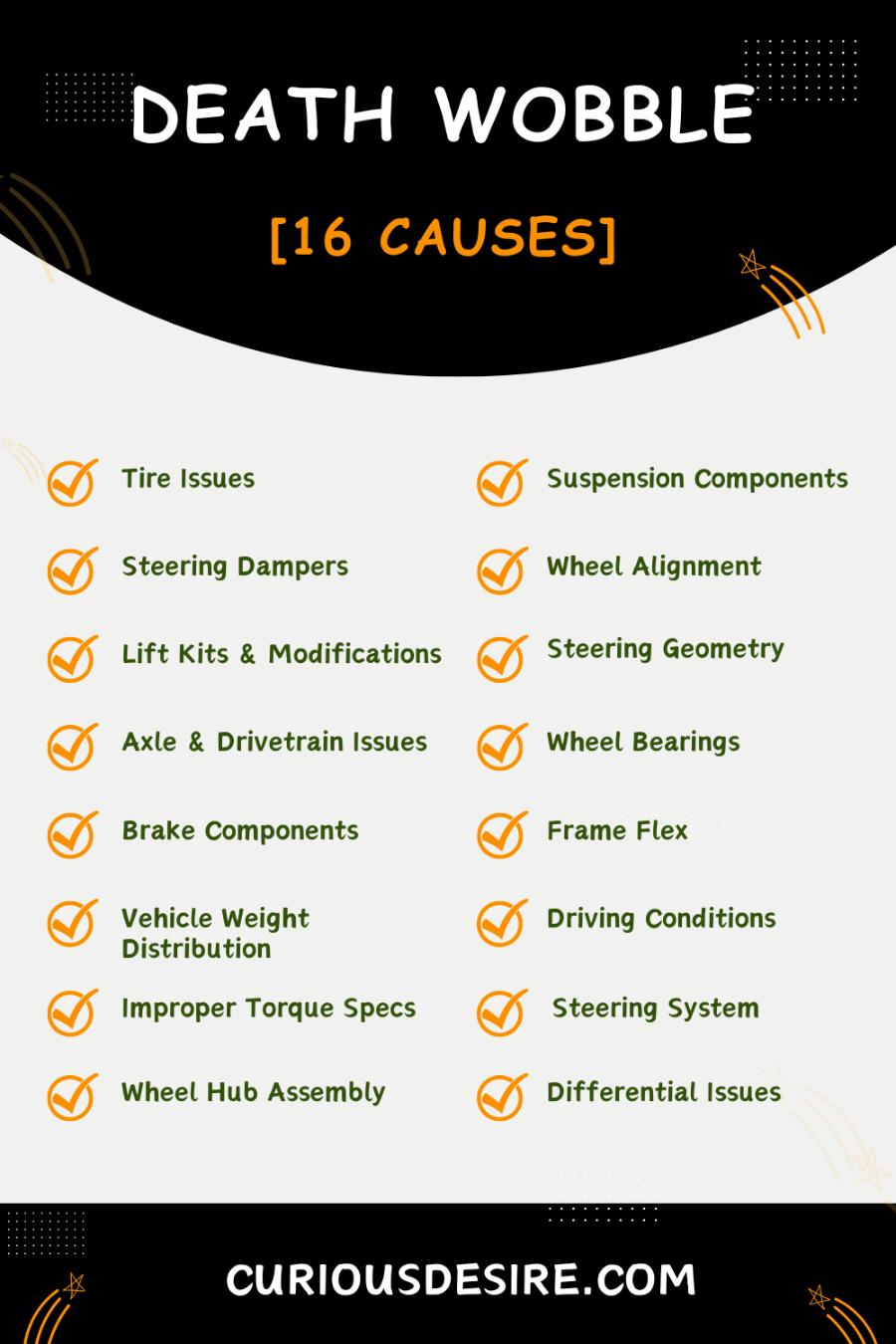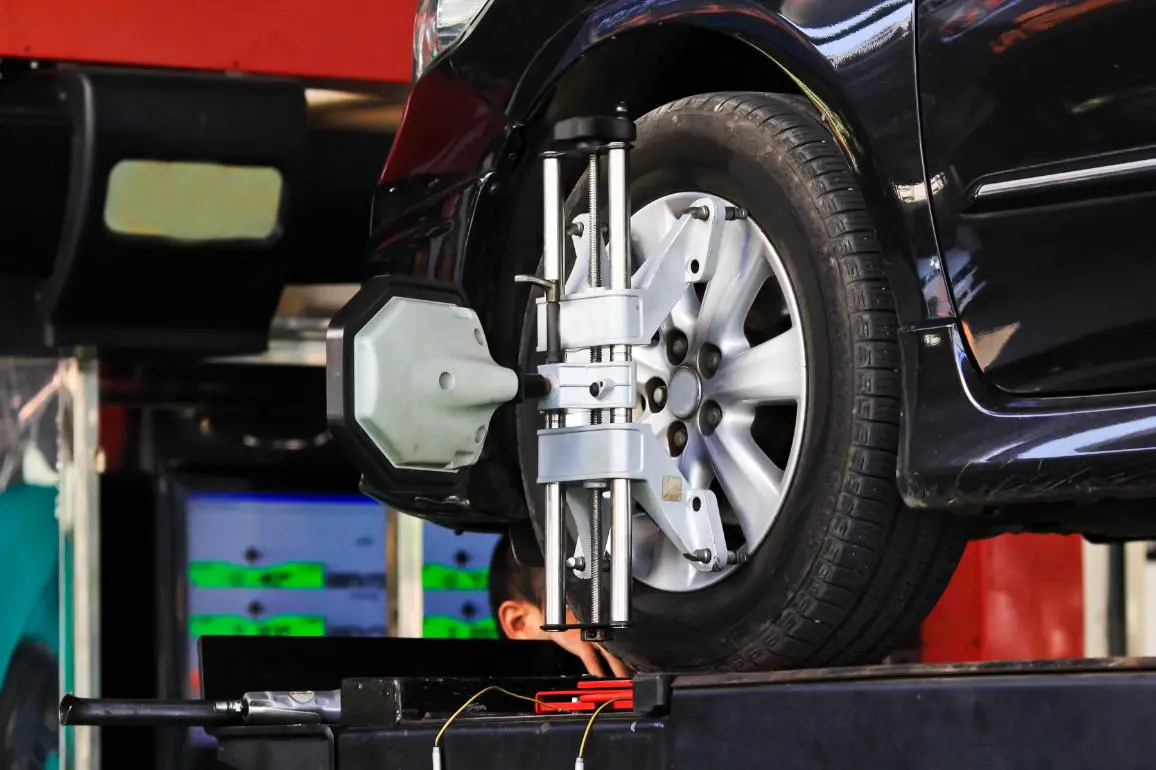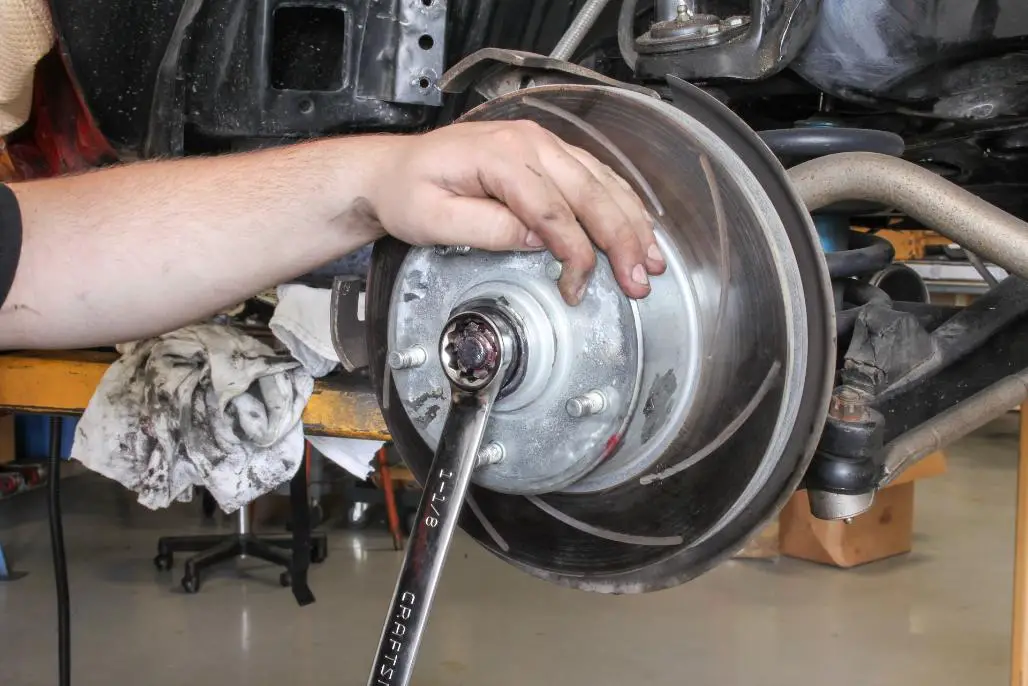Death wobble” is a term that strikes fear into the hearts of drivers, particularly those of trucks, SUVs, or lifted vehicles.
It refers to a terrifying phenomenon where the vehicle’s front end violently shakes, making steering feel uncontrollable.
While relatively rare, it can be a harrowing experience and poses a significant safety risk.
Understanding the causes of death wobble is crucial for preventing it and ensuring safe driving conditions.
In this guide, we’ll discuss the various causes that contribute to death wobble.
Here are the top 5 causes of death wobble:
- Suspension Components
- Wheel Alignment
- Steering Geometry
- Frame Flex
- Driving Conditions
[toc]

1. Tire Issues
Death Wobble Causes FAQs
1. What is the most common cause of the death wobble?
The most common cause of death wobble is typically attributed to issues with the vehicle’s suspension components, particularly worn or damaged components such as ball joints, control arms, track bars, tie rod ends, or bushings.
When these components become worn or loose, they allow excessive play in the steering and suspension system, leading to instability and wobble, especially at higher speeds.
2. Why do death wobbles happen?
Death wobbles happen due to a combination of factors, including worn or damaged suspension components, improper wheel alignment, tire issues, steering system problems, and driving conditions.
These factors can create instability in the vehicle’s steering and suspension system, causing oscillations and vibrations that amplify into a severe shaking sensation known as death wobble.
3. How do you stop a death wobble?
To stop a death wobble, it’s crucial to address the underlying causes.
This typically involves a systematic inspection of the vehicle’s steering and suspension components to identify and correct any worn or damaged parts.
Common steps to stop death wobble include replacing worn or damaged suspension components, ensuring proper wheel alignment, balancing and rotating tires, checking steering dampers, and addressing any other issues contributing to instability.
4. What are the early signs of a death wobble?
Early signs of a potential death wobble may include minor vibrations or shimmying felt through the steering wheel, particularly at highway speeds.
These vibrations may worsen over time and can eventually escalate into a severe shaking or wobbling sensation that becomes difficult to control, indicating the onset of a full-blown death wobble.
5. What is another name for the death wobble?
Another name for the death wobble is “speed wobble” or “violent shimmy.”
These terms are often used interchangeably to describe the sudden and uncontrollable shaking or oscillations that occur in a vehicle’s steering and suspension system, typically at higher speeds.
6. Is death wobble normal?
No, the death wobble is not normal and indicates underlying issues with the vehicle’s steering and suspension system.
While it can occur in certain vehicles, particularly those modified with aftermarket components, it is generally considered a severe safety concern that requires immediate attention and repair to ensure the safe operation of the vehicle.
7. Can bad shocks cause death wobble?
While bad shocks can contribute to instability in the vehicle’s suspension system, they are not typically the primary cause of death wobble.
However, worn or damaged shocks can exacerbate other underlying issues such as worn suspension components or improper wheel alignment, potentially increasing the likelihood or severity of death wobble.
8. How fast is the death wobble? / At what speed does death wobble happen?
Death wobble can occur at various speeds, but it is most commonly experienced at highway speeds, typically between 45 to 65 miles per hour (72 to 105 kilometers per hour).
However, the exact speed at which death wobble occurs can vary depending on factors such as the vehicle’s design, condition, and driving conditions.
9. What causes speed wobble?
Speed wobble, which is another term for death wobble, is caused by a combination of factors including worn or damaged suspension components, improper wheel alignment, tire issues, steering system problems, and driving conditions.
These factors create instability in the vehicle’s steering and suspension system, resulting in oscillations and vibrations that amplify into a severe shaking sensation at higher speeds.


